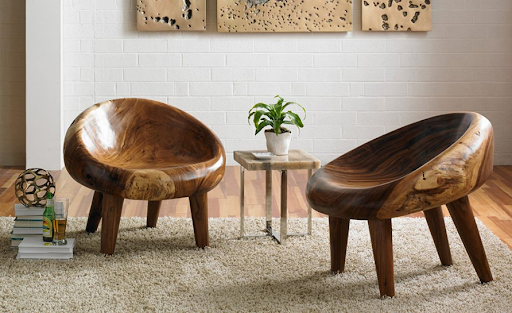
What is the Circadian Rhythm and Its Impact on Interior Lighting?
The human body has an innate way of functioning, how nature intended it to be. It is almost like an autotune setting- where everything follows a rhythm to work at their optimal best. One such system that governs us all is the circadian rhythm. So, keep reading to find out what the concept encompasses and how it can be used to enhance the interior design of your space.
What is Circadian Rhythm?
The circadian rhythm is essentially our body's internal clock, orchestrating various physiological processes in sync with the day-night cycle. Governed by the suprachiasmatic nucleus in the brain, this intricate system influences not only sleep patterns but also hormone release, body temperature, and other essential functions. Exposure to natural light plays a pivotal role in regulating this rhythm, but in today's world, where many spend a significant portion of their time indoors, the role of artificial lighting becomes paramount.
What is the Impact of Circadian Rhythm on Interior Lighting?
Disruptions in the circadian rhythm have been linked to sleep disorders, mood swings, and even chronic health conditions. Artificial lighting, particularly the blue-rich light emitted by many LED sources, can interfere with the natural progression of circadian rhythms, leading to disruptions in sleep patterns and overall health.
To mitigate these negative effects, it becomes imperative to design interior lighting that not only provides sufficient illumination but also supports the body's natural circadian rhythm. It involves thoughtful consideration of light intensity, color temperature, and exposure duration throughout the day.
How to Design Interior Lighting to Support the Circadian Rhythm?
Designing an interior space that syncs with the natural body clock leads to the development of environments that are more productive and conducive to growth. So, let’s explore the key aspects of interior lighting that can help stimulate the circadian rhythm.
-
Dynamic Lighting Systems
Dynamic lighting systems are a cornerstone in designing interior spaces that align with the circadian rhythm. These systems replicate the natural changes in light intensity and color temperature throughout the day. During morning hours, the lighting can simulate the warm hues of sunrise, gradually transitioning to cooler, brighter tones during midday, and then returning to warmer tones in the evening. This dynamic adaptation helps regulate the body's production of melatonin, promoting alertness during the day and facilitating relaxation in the evening.
-
Tunable LED Lighting
The use of tunable LED lighting provides a versatile solution for supporting circadian rhythms. This technology allows for the adjustment of color temperature, enabling designers to create lighting environments that mirror the natural progression of sunlight. Tunable LED systems can be programmed to emit cool, energizing light during working hours and warmer, softer light during the evening, promoting a seamless transition between day and night lighting conditions.
-
Task-Specific Lighting
Tailoring lighting to specific tasks and activities is essential in optimizing the circadian rhythm. Bright, cool lighting is suitable for workspaces, enhancing alertness and productivity during the day. In contrast, softer, warmer lighting is more conducive to relaxation and winding down in the evening. Task-specific lighting design recognizes the varying needs of individuals throughout the day, supporting both focused work and restful periods.
-
Natural Light Integration
Incorporating natural light into interior spaces is a fundamental strategy for circadian rhythm support. Positioning workstations near windows and utilizing architectural elements like skylights can maximize exposure to natural light. Natural light not only aids in regulating circadian rhythms but also enhances overall well-being, mood, and visual comfort. Integrating daylight into design reduces reliance on artificial lighting and contributes to a more sustainable and energy-efficient environment.
-
Automated Lighting Controls
Implementing automated lighting controls facilitates seamless adjustments based on the time of day. These controls can be programmed to mimic the natural ebb and flow of daylight, gradually transitioning between different lighting scenarios. Occupancy sensors and ambient light sensors can further optimize energy efficiency by adjusting artificial lighting levels based on the presence of individuals and the available natural light.
-
Personalized Lighting Solutions
Recognizing that individuals may have different preferences and sensitivities to light, personalized lighting solutions can enhance the effectiveness of circadian rhythm support. Some people may benefit from brighter, cooler light in the morning to jumpstart their day, while others may prefer a gentler awakening with warmer tones. Providing options for personalization allows occupants to tailor their lighting environments, promoting a sense of control and well-being.
Top Interior Lighting Products on Archizy
Whether you are a designer or a project owner, Archizy is a one-stop destination for all interior furnishing, decor, and lighting needs. Discover the best interior lighting products you can shop directly from Archizy.
Orion Water Drop Hanging Lamp
Diya
Meraki Table Lamp
Radiant Flux
Orbit Glow Hanging Lamp
In Conclusion
By adopting thoughtful lighting design strategies that mimic the natural changes in daylighting, we can create environments that support our circadian rhythms. Using this science can help us in curating spaces that are more vibrant, healthier, and happier.
Discover the best furnishing, lighting, and decor products on The Archizy Shop.














